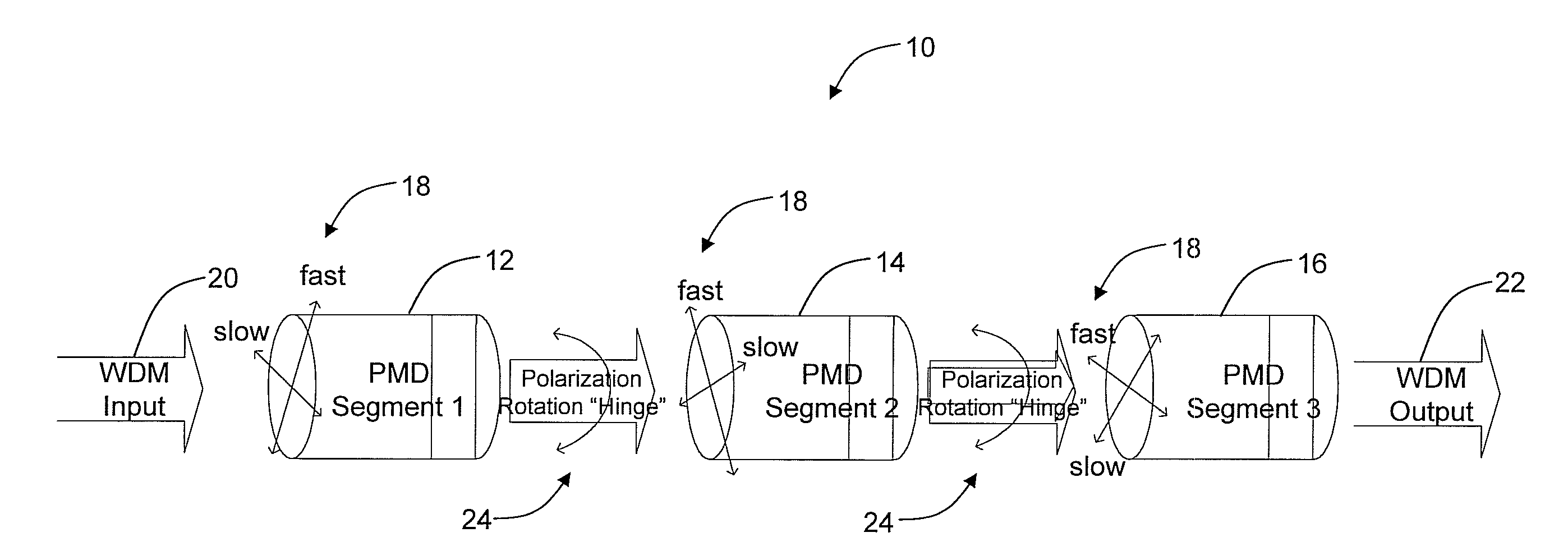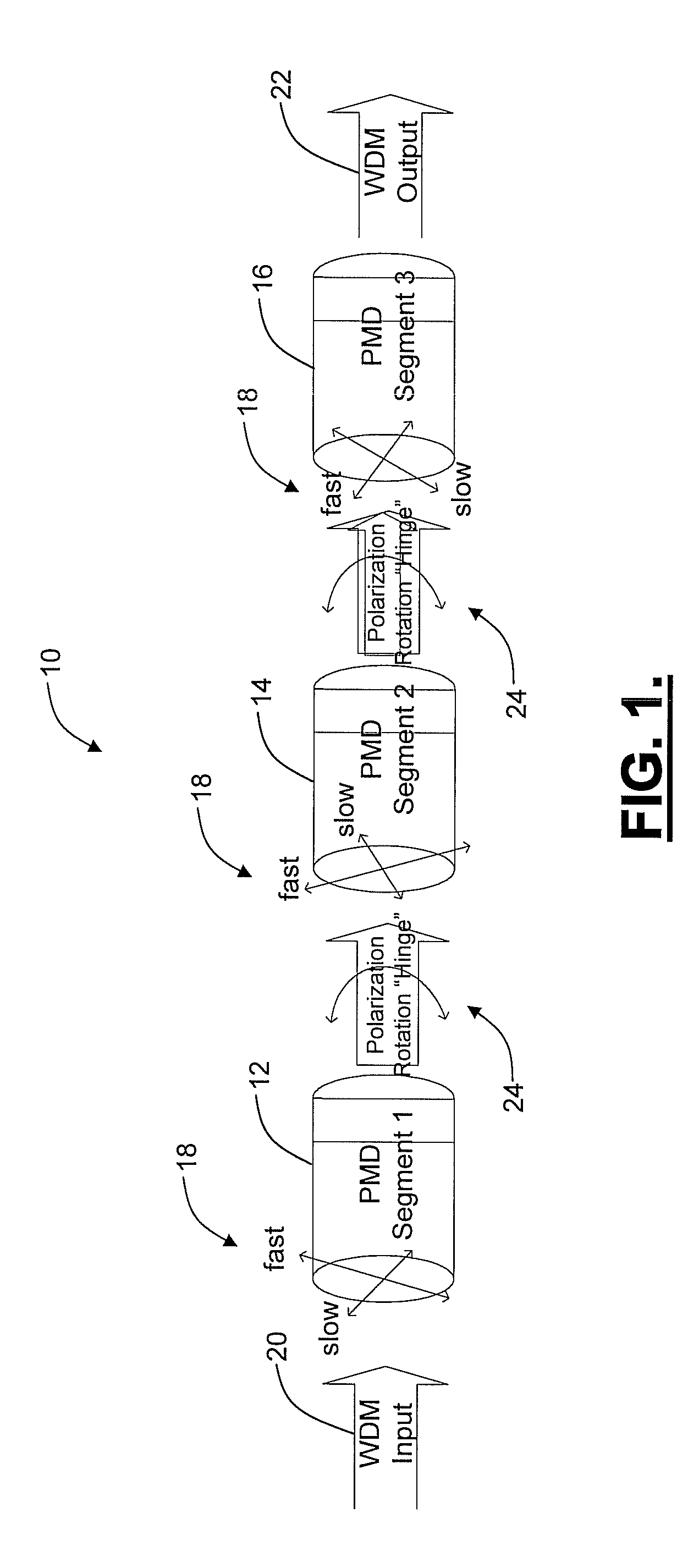Systems and methods for the mitigation of polarization mode dispersion impairments in fiber optic links
a technology of fiber optic links and impairments, applied in multiplex communication, electromagnetic transmission, electrical equipment, etc., can solve the problems of pulse overlap, fec's limited ability to deal with error bursts, increased bandwidth, etc., to improve polarization states, reduce interference, and reduce interference
- Summary
- Abstract
- Description
- Claims
- Application Information
AI Technical Summary
Benefits of technology
Problems solved by technology
Method used
Image
Examples
Embodiment Construction
[0022]In various exemplary embodiments, the present invention provides systems and methods for the mitigation of PMD impairments in fiber optic links. The present invention utilizes synchronous polarization modulation and digital control of polarization modulation, instead of independent polarization modulators and analog control used in the current state of art. Also, the present invention utilizes a feedback loop to improve identified polarization states instead of a random open loop operation. Further, the present invention includes a mechanism to continually update and improve polarization states based on pre-corrected FEC error rate analysis from data receivers. Additionally, the present invention includes a mechanism for collecting and correlating error feedback signals from multiple geographically-diverse network nodes. Advantageously, the present invention provides a cost-effective and efficient way to implement mitigation of PMD impairments, while using only a small fractio...
PUM
 Login to View More
Login to View More Abstract
Description
Claims
Application Information
 Login to View More
Login to View More - R&D
- Intellectual Property
- Life Sciences
- Materials
- Tech Scout
- Unparalleled Data Quality
- Higher Quality Content
- 60% Fewer Hallucinations
Browse by: Latest US Patents, China's latest patents, Technical Efficacy Thesaurus, Application Domain, Technology Topic, Popular Technical Reports.
© 2025 PatSnap. All rights reserved.Legal|Privacy policy|Modern Slavery Act Transparency Statement|Sitemap|About US| Contact US: help@patsnap.com



